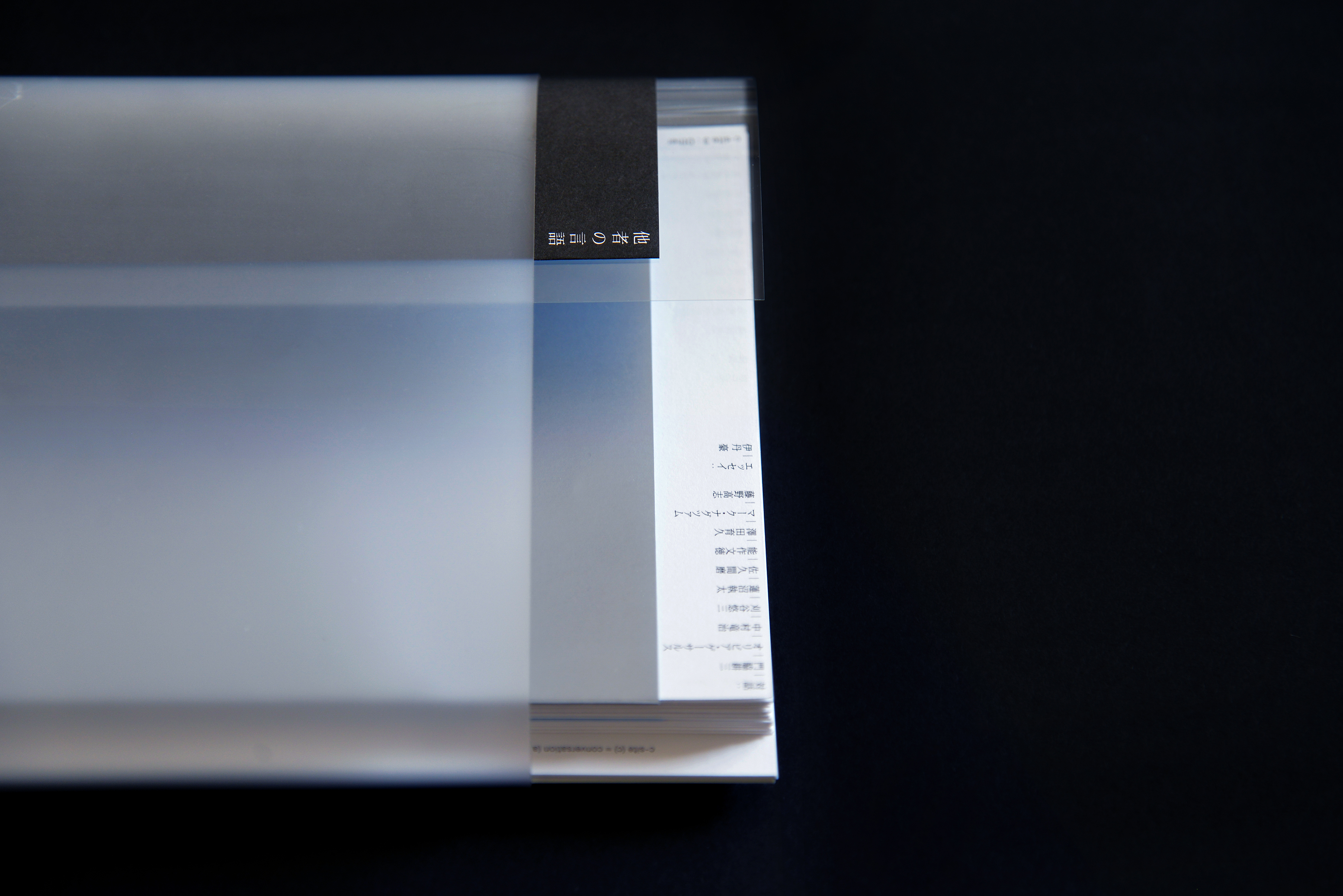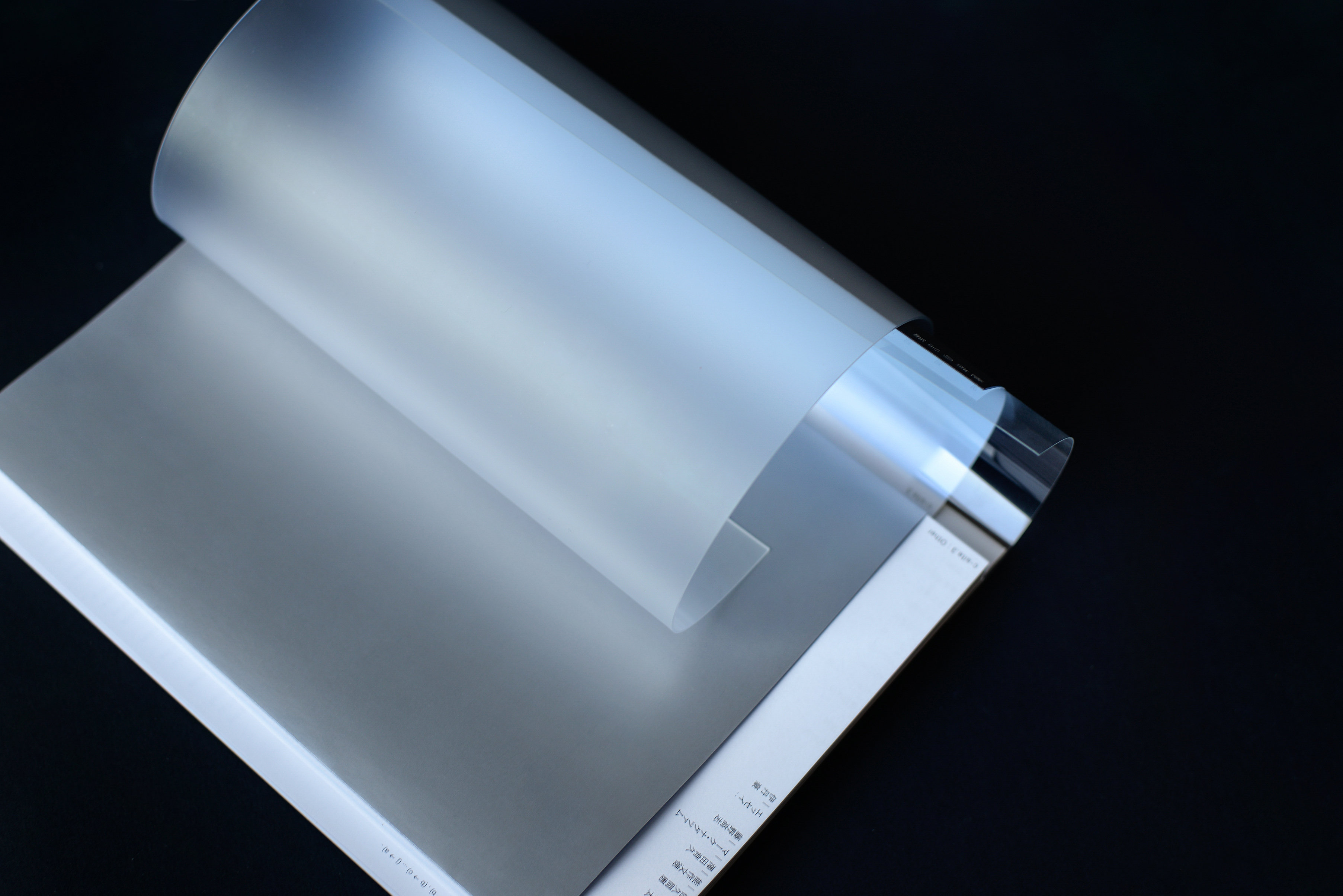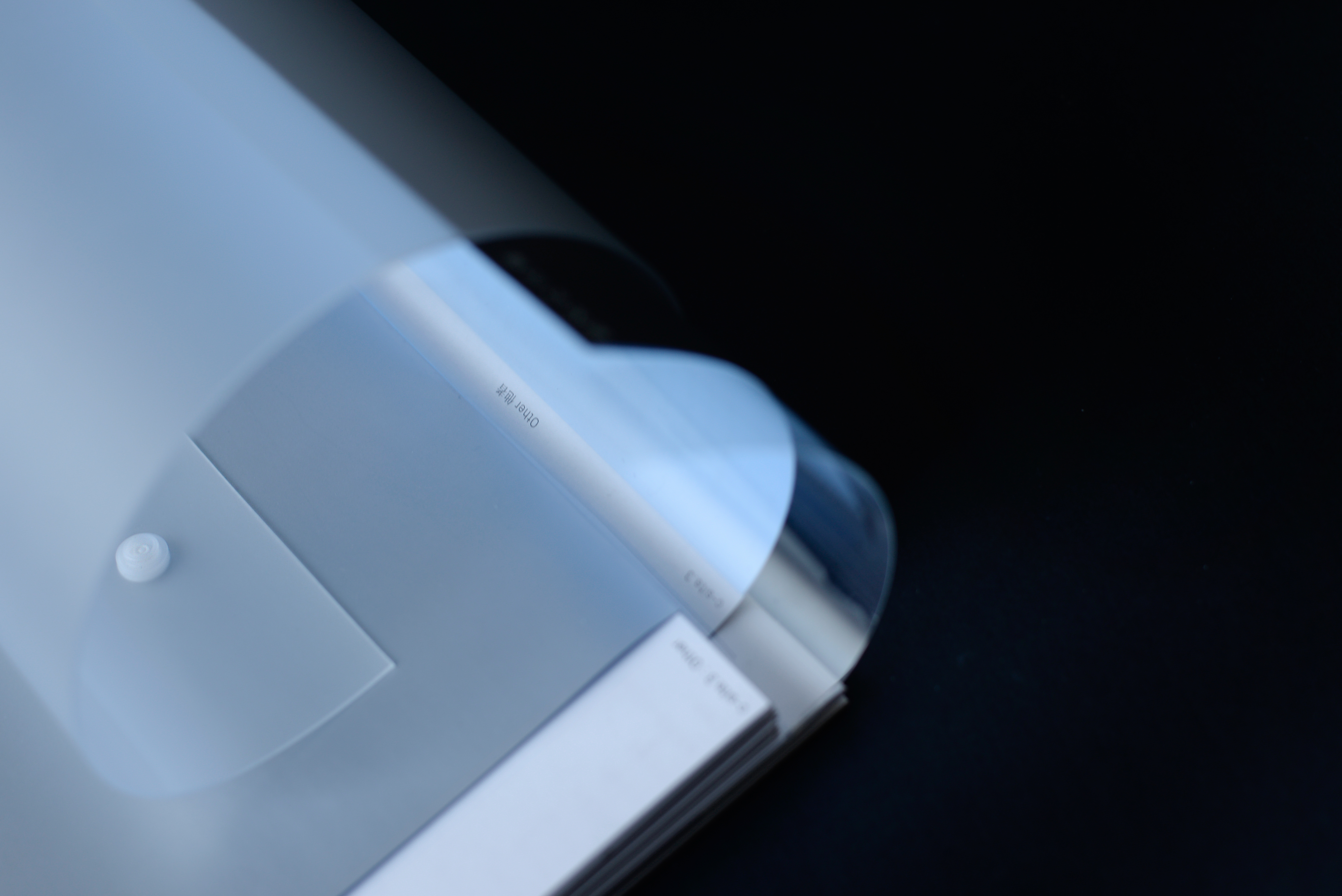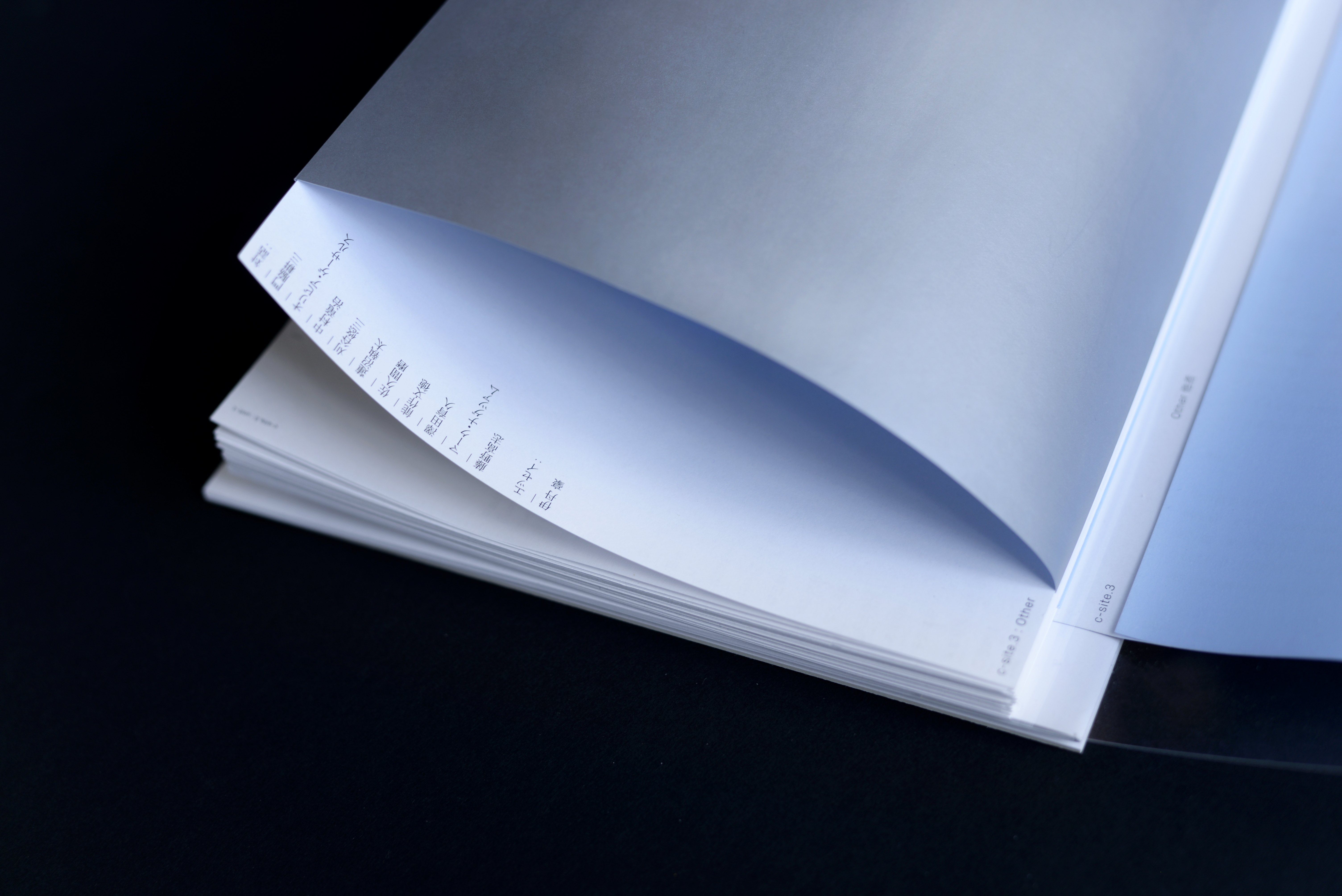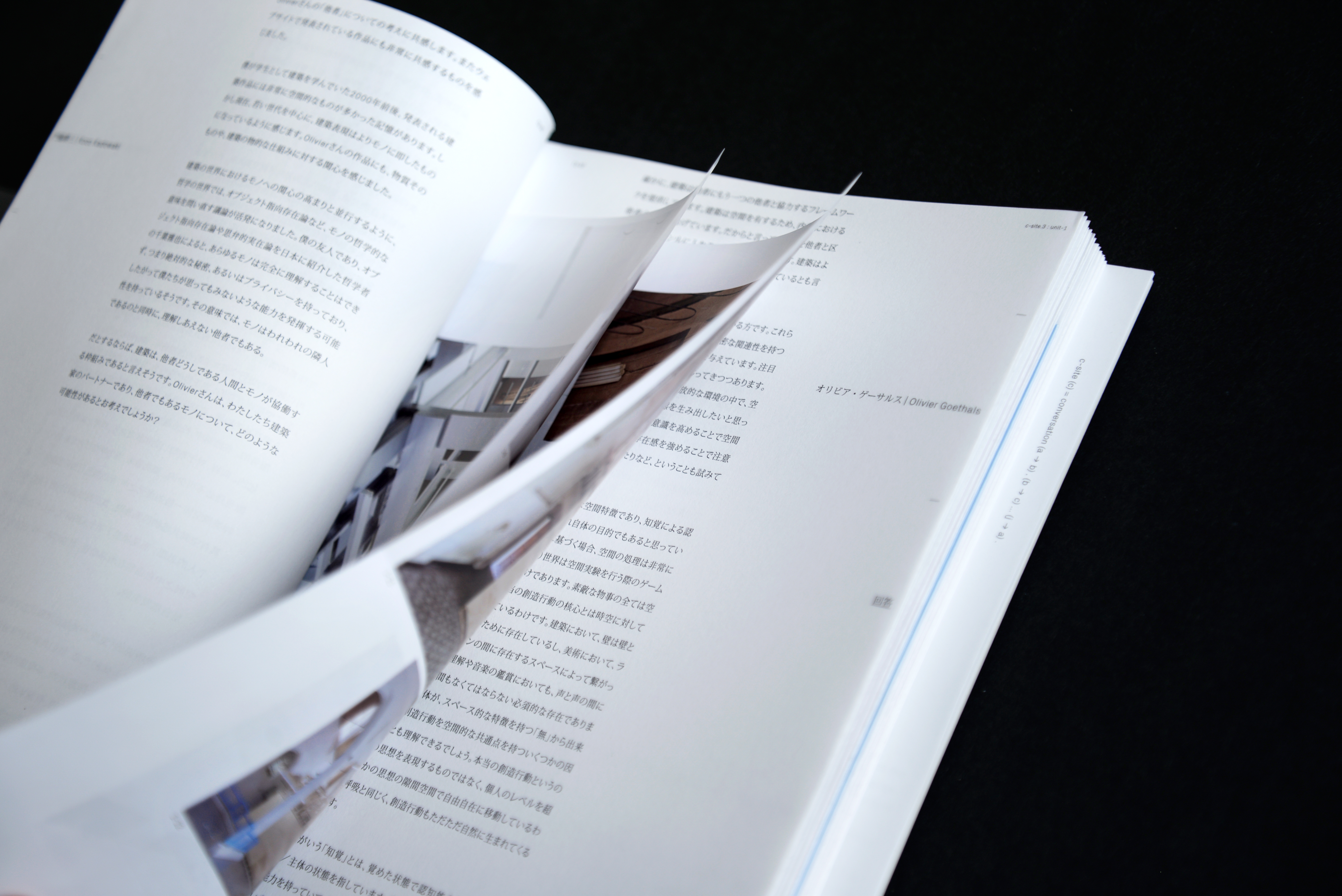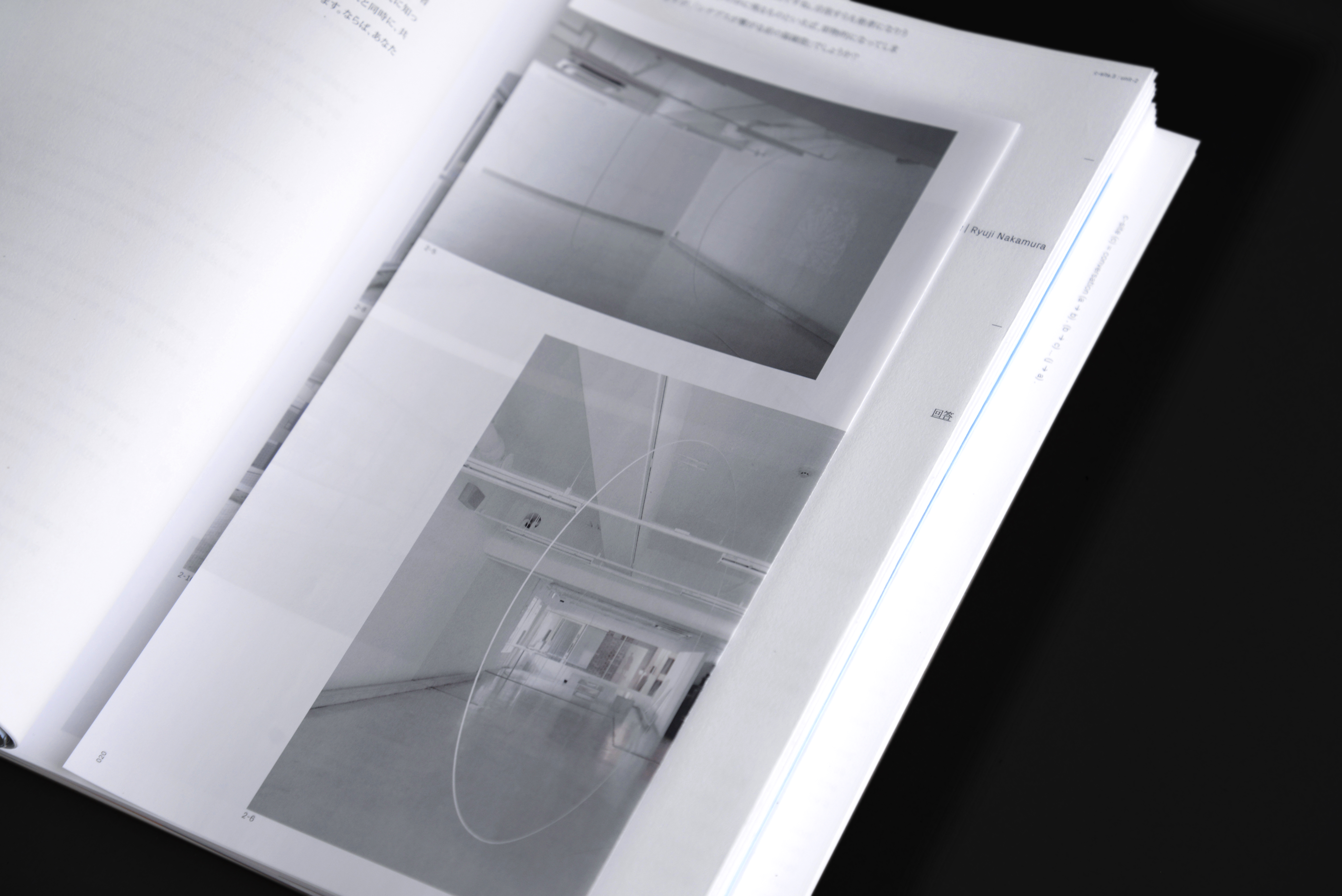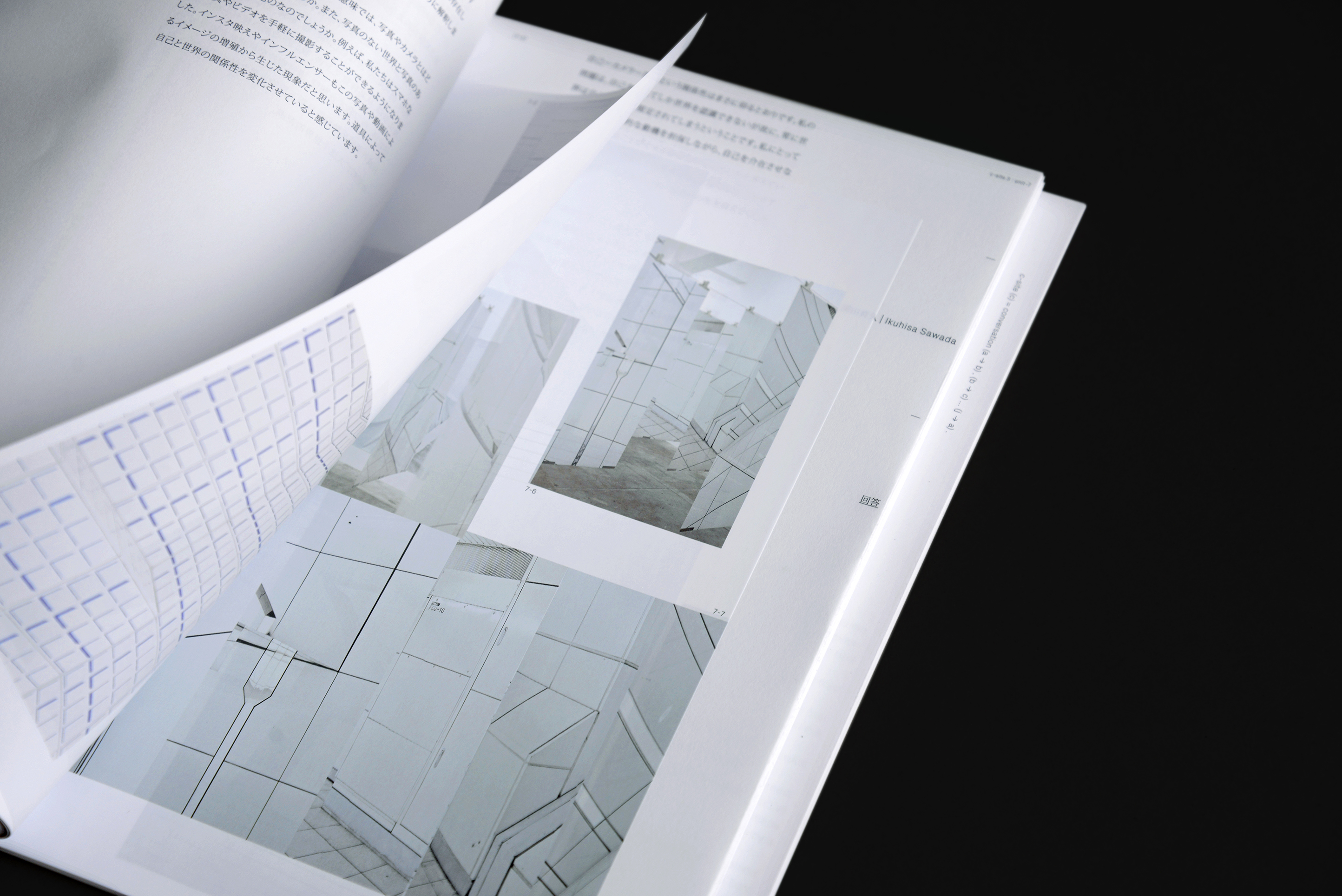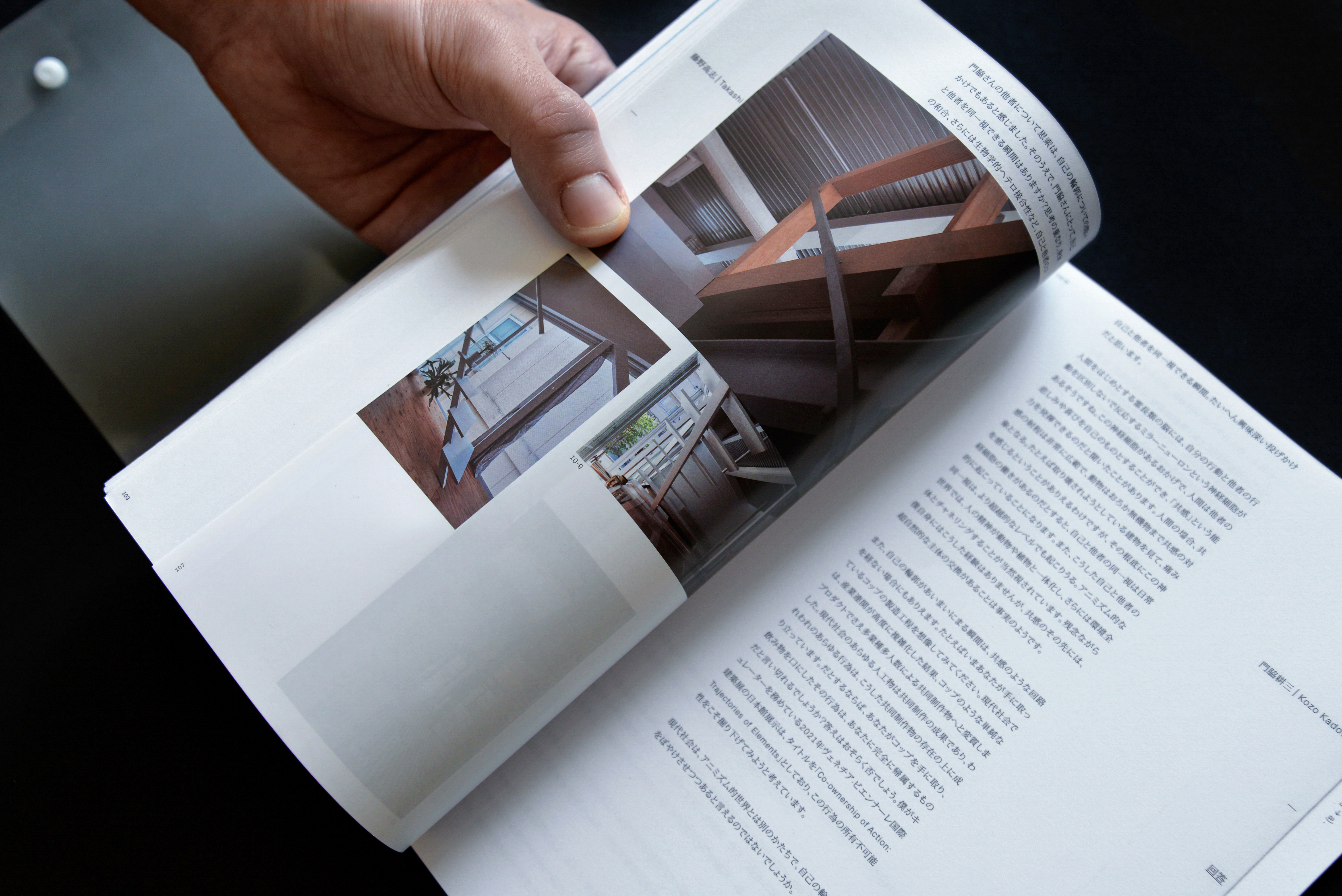Size : H245mm x W190mm x D10mm
Publishing date : 2021. 2
Contents [137p]
Print : Offset (Hand assembled and bound)
Design : ori.studio
Language : Chinese and Japanese versions (Both include English translation)
Publisher : da大 in print
ISBN978-19995159-4-2
尺寸 :H245mm x W190mm x D10mm
发行时间 : 2021. 2
页数 :137页
胶版印刷 + 手工装帧
设计 : ori.studio
语言:中文+英文版/日文+英文版
出版社 :da大 in print
ISBN978-19995159-4-2
サイズ:H245mm x W190mm x D10mm
発行年: 2021. 2
仕様 :137頁
製本 :offset + hand assembled
デザイン : ori.studio
言語 :中国语+英語/日本語+英語
出版社 :da大 in print
ISBN978-19995159-4-2
About c-site :
c-site (c = conversation) is based around an interdisciplinary discussion surrounding a singular topic, exploring it in physical and metaphysical terms. It has been removed from the typical interviewer/interviewee archetype. Rather, it has been formatted to take place in a sequential manner (a → b) , (b → c) … (j → a) where participant (a) will ask a question to participant (b), who after answering will ask a question to the next person down the list (c), so as to achieve a more natural and autonomous form of dialogue.
Our ultimate goal is to analyze the nature and potential of a topic by combining the perspectives of people from various backgrounds, experiences, and ways of thinking, thus maximizing the scope of peoples understanding and ways of thinking.
c-SITE是da大 in print中的主刊出版类别之一。以跨学科和跨领域的方式,围绕某个主题的而进行,从物质和非物质的角度对其进行深度探讨。不受到采访/被采访的单一问答形式所限制,取而代之,以有机、顺序的方式 (a → b) , (b → c) … (j → a) 来开展进行,参与到其中的讨论者 (a),向讨论者 (b) 提出问题,(b) 在作答后再向名单中的下一位对话者进行提问,以此类推,由此来实现一个更加自然且更加自主的对话形式。
我们的最终目的是通过结合来自不同背景、经验和思维方式的人的观点,来深度剖析所探讨一个主题的本质和潜在力量,尽可能扩大人们对其理解和思考的范围
c-SITEはda大 in printのメイン出版物のなかの一つである。一つの学科と分野に拘らず、あるテーマに対して物質的及び非物質的な角度から検討とリレートークを行う形で作られていく。伝統的なインタビューによく見られる質疑回答に代わり、有機的且つ (a → b) , (b → c) … (j → a) のように順番を追うような形で、即ちリレートーク参加者 (a) から (b) に質問し、(b) はそれを回答した上で次の参加者であるcに質問するような形をとることで、より自然で且つ能動的な対談となることを目指す。
また、異なる背景、経験と考え方を持つ方々のご見解をまとめることで、一つのテーマにおいてその本質と潜在力をより深く分析し、それに対する人々の理解と考え方をできる限り幅広く伝えていくことを最終目標としている。
About the topic :
Other -
A pupa lies dormant within its cocoon, generating a detachment between it and the external environment. From the perspective of this fragile pupa, branches full of natural fragrance, the rolling in of a dense fog, and coarse earth all belong to what can be described as ‘other’.
This tiny cocoon is recorded by dew in the form of a reflected image, and looking from the perspective of this reflection the universe itself becomes ‘other’.
This phenomenon could be generated manually by photographing the present moment, as the past and future would therefore become ‘other’. This would also be true for the gaps which lie between one single point of time to the next.
Following this line of thinking which is based on the dimension of time, the dimension of space can be regarded as ‘other’.
If we create in our own imaginations a unique space within which our consciousness can wander, all outside of this dreamt world can be referred to by using the word ‘other’, as can the the parts within the space which we don’t actively realize. The scale, distance, shape and complexity of ‘other’ is also constantly disturbed by the addition of new objects or by a change in scene and context.
Can ‘other’ exist at the same scale as a single cell? Can a subject coincide, replace, or influence ‘other’ from its own perspective? What are the differences in perspective from inside and outside in regards to ‘other’? If boundaries are blurred, how can we define what is ‘other’? Can the space (or interlaced relationship) between ‘other’ and a subject be observed? How many instances of ‘other’ can be generated through fixed-point observation? How can we distinguish ‘other’ from the white space which surrounds it? Can the original nature of things and the nature of ‘other’ be switched? Are there a variety of methods in forming ‘other’? From our own perspectives, can the phenomenon of ‘other’ be described as an illusion? Can ‘other’ in relation to time coexist with ‘other’ in relation to space?
他者 -
当一只幼蛹在茧中安宁地沉睡,一切环境被隔在外面——带着自然香气的枝条、微弱的气流、杂乱的碎石子,光、风、雨,都属于「他者」。当这个微小的茧被反射在一颗露珠的表面,相对被复制的下来的映像,茧的原型、外部空间、乃至整个宇宙都可以被看作「他者」。
如果将现时刻用照片记录下来,过去和未来的形态可以被看作「他者」。特定的时间点之间的间隙/过渡也可以被看作「他者」。如此单纯地从时间的维度上来观测眼前的场景,那么在空间的维度中的物质皆可以被看作「他者」了。若以横向的维度来观望的话,纵向的空间也就成了「他者」。由此再展开新的想象,那么在脑海中的场景之外的部分也可以被看作「他者」了,当然,没有被意识到的部分皆可以被看作「他者」。
在新物质的加入或场景的改变时,「他者」的尺度、距离、形态、复杂程度也正在不断被干扰着。「他者」可以像细胞一样以缩尺的形态存在着吗?从内部和外部分别来观察「他者」将产生怎样的结果?主体是否可与「他者」重合、置换或相互作用?如果边界被弱化,应该如何定义「他者」?「他者」和主体之间的间隙(或交错的部分)可以被找寻到吗?通过定点观测的方式可以产生多少种「他者」的可能性?应该怎样区分「他者」与「余白」?事物的原始性质和「他者」的性质可以进行置换吗?有多种输出方法的存在吗?「他者」在我们的视线中是一种谎言吗?时间形态的「他者」与空间形态的「他者」可以共存吗?等。
他者 -
一匹の蛹が繭の中で静かに眠っている。外部の環境は繭によって外側に隔てられている。自然の香りがする枝、かすかな空気の流れ、雑乱に置かれた小石、光、風、雨などは全て「他者」に属される。
この小さな繭が水玉の表面に反射され、もう一つの繭ができる瞬間、その映像からすると元の繭、外部空間、全宇宙などは「他者」に属されるものとなる。
もし今を記録として写真に撮る場合、過去と未来の形は「他者」として見ることができる。ある特定の時間と時間の間に存在する隙間時間/過渡部分にあたるものも「他者」に属されるだろう。
ただ単に時間の角度から目の前の景色を観察する場合、空間に存在する物事は「他者」として見られる。要するに時間を横軸に観察する場合、縦軸の空間は「他者」にあたるわけだ。
ここからまた新しい想像を広げてみよう。頭に浮かぶ景色以外のものは全て「他者」の範囲に入る。当然、我々に認識されなかった内容も「他者」の範囲に収まるだろう。
新しい物事の加入或いは景色の変化によって、「他者」のスケール、距離、イメージ、複雑さなども絶えず影響される。「他者」が細胞のように小さな形で存在することは可能だろうか。内部と外部から「他者」を観察する場合、どんな結果を得られるのだろう。本体は「他者」と重ねあったり置き換えられたり、或いは相互に影響しあったりするだろうか。そこの境界線がぼやけてきた場合、「他者」はどう定義すればいいのか。「他者」と本体の間にある隙間(或いは重ねあった部分)は見つけられるものなのだろうか。時間を決めて観察する方法をとった場合、何種類の「他者」を見つけられるだろうか。「他者」と「余白」はどう区別したらいいのか。物事の根本的な特徴と「他者」の特徴はお互い置き換えられるのだろうか。アウトプットの方法は何種類もあったりするだろうか。我々の視野に入った「他者」は単なる虚構なのだろうか。時間の形をした「他者」と空間の形をした「他者」は共存することができるのだろうか。等。
© 2019, da大 in print

